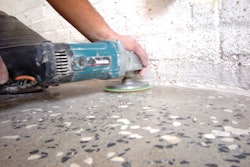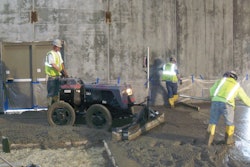As construction margins are squeezed tighter by limited labor markets, increasing regulation and customer price sensitivity, these key rental customers are looking for new ways to cut costs and streamline processes. Equipment is often the second largest jobsite cost after labor (whether equipment is rented in from external vendors or supplied internally) and it’s one of the key areas that many construction companies are targeting for efficiency savings.
Every cent that equipment costs overrun is a direct cut into those tight margins. Sometimes equipment cost overruns come from inaccurate ordering, e.g., ordering the wrong size generator because the jobsite left a garbled phone message or a one-line email for someone in procurement to deal with. In other cases, it's simple inefficiency; the jobsite doesn’t call in an off-rent in a timely fashion. The volume of equipment and variety of vendors (sometimes re-renting from each other) that supply a large jobsite make it difficult to keep track of all the rented equipment.
One of the biggest issues that construction companies have with equipment rental is that the jobsite is a physically separate entity which might work different hours compared to the corporate procurement team. The procurement team might also have limited infrastructure and administrative personnel and very little over sight of what goes on from an equipment perspective. Every cost the jobsite incurs must be accounted for, but visibility of those costs can be very limited until an invoice hits accounts payable, while the team on the jobsite simply wants to get the job done with the right equipment.
Lack of information can be costly
A rental company might think they are doing the right thing when accepting a rental with no PO number from a guy on a cell phone because a trench collapsed and they need emergency trench panels, pump and excavator on site quickly, but the reality is this creates issues for the construction and the rental company:
- Chances are that the first information about the rental will arrive the day your invoice hits the accounts payable team.
- The chances of the invoice getting paid first time just went through the floor because there’s no associated purchase order number and that means procurement will waste time tracking someone to approve it.
- PMs are going to get hit with an unexpected cost at the end of the month and are therefore going to be far more likely to challenge it.
- These pieces of equipment are more likely to be left on site and not off-rented in a timely manner because they aren’t part of the standard schedule; your emergency delivery slips away from being anyone’s direct responsibility.
The problem, of course, is that the emergency existed, it can’t be ignored and approval processes do need to be bypassed. Traditional construction Enterprise Resource Planning (ERP) systems are often poor in tracking equipment rentals so the problem is magnified by physical disconnection between jobsite and procurement, the need for labor-intensive double entry into multiple systems and internal processes which work well for tracking materials but don’t take into account the “duration” of a rental, emergencies and the off-rent process.
The sheer scale of these costs can be enormous. One construction company (who prefers to remain anonymous) recently did an audit of one of their large jobsites and discovered they were paying nearly $14,000 per week for rental equipment that wasn’t there. They had no way of telling whether it had ever arrived, ever been called off-rent, if it had been moved to another jobsite and no one had been informed or if it, or had been mistakenly picked up by another rental company. On an annual basis, that would be $800k of additional and unnecessary costs connected with just one jobsite.
The solution is data
To alleviate the difficulties that construction companies face, many rental companies offer access to real-time, on-rent data for their large customers. But if you’ve got 10 preferred vendors, that means logging onto 10 separate systems to find the information and collating 10 sets of on-rent reports into a single file to send out to your jobsites. (This might be one of the key reasons why we often hear that such information isn’t accessed as frequently as expected, even when customers ask for it.)
In the UK, rental companies regularly provide “implants” to their largest construction customers - people paid for by the rental company, who sit with the procurement team in the construction business and handle all the rentals. They double enter orders into the customer’s procurement system and their company’s rental system to try to keep things on track. Of course, if you have 10 preferred vendors that means 10 employees from other companies sitting with you and potentially looking over each other’s shoulders when pricing orders.
The solution for many construction companies lies in bringing mobile and smart technology into the jobsite and into their equipment management processes. This can make it possible for employees to requisition equipment from their smart phones or tablets so that the demand is clearly articulated and project task codes can be defined from the beginning of the process. It can enable online requisitions, integrated into the construction equipment management and/or project system, as well as keep procurement updated on every action whether it’s confirmation of a delivery to a jobsite or an off-rent request.
Automated vendor bidding is the next logical step. In this scenario, if a jobsite requisitions something that the construction company knows they can’t or don’t supply internally, they can throw that open to a controlled list of vendors electronically and take the ‘best’ offer when it comes in. The benefits to the construction company are obvious: the solution works even for out-of-hours emergencies, visibility is maintained to all parties throughout, and vendors can confirm their own rates and delivery times pushing the responsibility fully onto the rental company for subsequent billing inaccuracies.
Construction companies are already looking for solutions that help them reduce their equipment rental costs and control their equipment utilization. Which of the equipment rental companies will deliver the technology and the integration that they need?


















